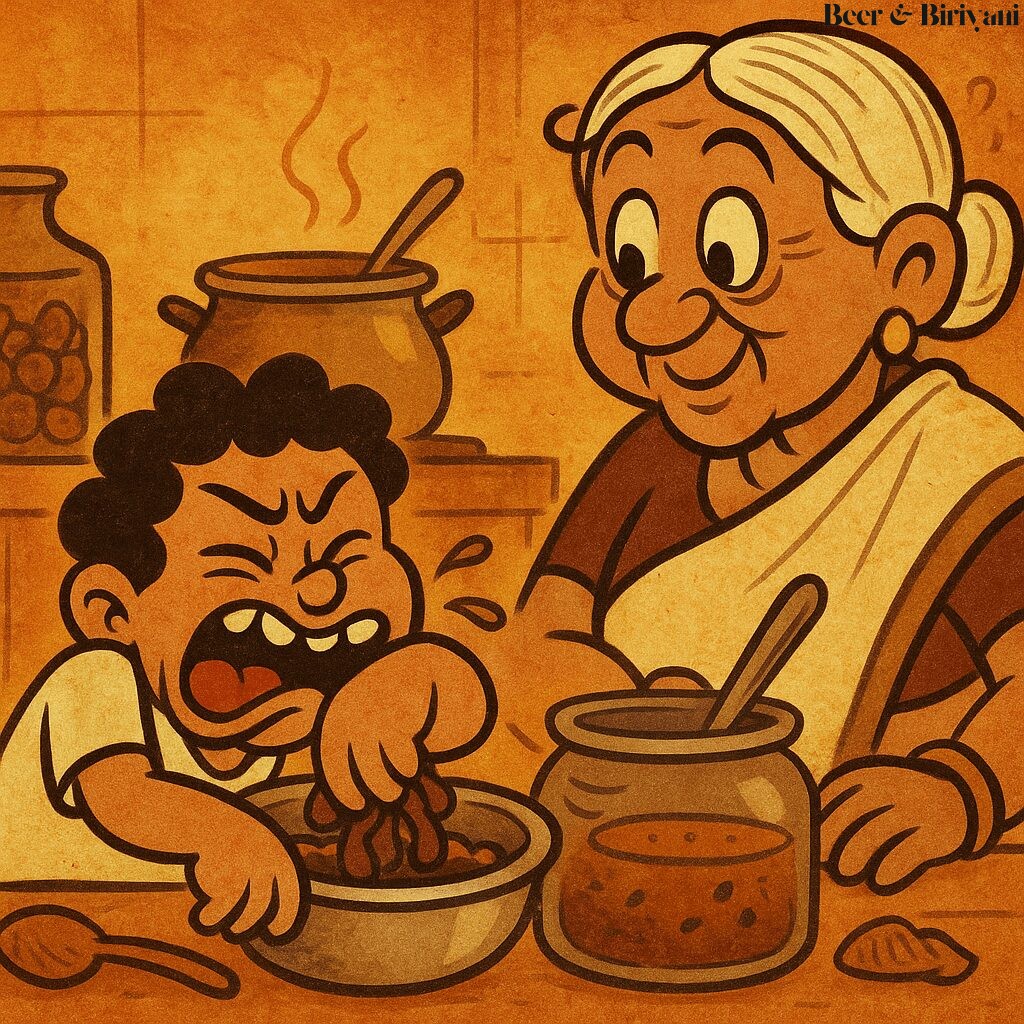The first taste that made me flinch—and then reach for more—was tamarind. That sharp jolt on the tongue, that split-second confusion of sour-then-sweet-then-sour-again, lodged itself into my mouth and memory with equal intensity. In the decades since, I’ve come to believe that sourness isn’t just a taste. It’s an emotion. And in Indian kitchens, imli—humble, sticky tamarind—is its sharpest storyteller.
Growing up in Mumbai, tamarind was everywhere, quietly commanding dishes from the shadows. Sambhar? Anchored by tamarind. Chutneys? Defined by it. Street-side panipuri? Elevated by its sneaky zing. And those icy summer drinks—imli sharbat served in copper tumblers, tart enough to make your eyes water and your spine straighten? They were a rite of passage. You didn’t just drink them. You braced for them.
Sourness That Lingers
There’s something introspective about tamarind. It’s not flamboyant like chili or warm like ghee. It hits you, then stays. It slows things down. I’ve always felt tamarind was the spice equivalent of reading an old letter—unexpectedly sharp, oddly comforting, and capable of triggering memories you didn’t know you’d filed away.
Maybe that’s why tamarind finds its way into comfort foods. Into the sambhar your mother makes when you’re home sick. Into the puliogare rice packed in train tiffins. Into the chutneys that sit silently beside dosas but do half the talking. Tamarind has emotional intelligence. It knows when to step in and just the right amount to give. Like a good friend who doesn’t solve your problems but makes them easier to digest.
The Alchemy of the Pulp
Of course, tamarind isn’t straightforward. It comes wrapped in a pod, gnarled and hard, like something found on a forest floor. To get to the good stuff, you have to break, soak, press, and strain. You have to wait. Which feels fitting—sourness, after all, isn’t instant. It develops. It demands effort. Like most things worth tasting.
My mother would soak tamarind in warm water, mashing it with her fingers until the water turned muddy and thick. Then she’d strain it into a steel bowl, tapping the strainer with practiced ease. That concentrated pulp would sit like a spell—small in quantity, massive in effect. A spoonful could wake up dal. A drizzle could finish rasam. Add too much, and the whole thing would collapse into a tangy mess. “Bas thoda hi chahiye,” she’d warn. “Just a little is enough.”
Regional Signatures of Tang
In South India, tamarind is an anchor. It’s the sour in sambhar, the body in rasam, the base of puli kulambu. In Maharashtra, it pairs with jaggery for that addictive sweet-sour tension in khatta-meetha amti. In Bengal, it appears in tetul tok, a tangy summer stew often made with green mango or even fish. And across the country, it shows up in chutneys—those little sidekicks that steal the scene.
It even sneaks into chaats and snacks. I dare you to eat a plate of bhel puri without that dark, sticky, tamarind-laced chutney. Without it, the mix of puffed rice and sev tastes like a text message without punctuation. Functional. But not quite right.
Sourness Is an Honest Emotion
Unlike sweetness, which flatters, or saltiness, which balances, sourness interrupts. It refuses to let you coast. Tamarind doesn’t wait to be liked. It says: “Feel this.” And you do. With your cheeks, your throat, your whole being. That’s why, when we taste tamarind, we don’t just think of the food. We remember the moment. The sweaty bus ride home after school, when you bought imli candy from a roadside vendor. The summer wedding where the sambhar was just right. The bottle of readymade pulp you bought in America, tasted, and then quietly replaced with the real deal from the Indian store two towns over.
The Sour That Travels
In Austin now, I keep tamarind paste in a jar. Not as romantic as the pods, but functional. I use it sparingly—just enough to round off a sambhar, or to give life to a tired stew. But sometimes, on a nostalgic Sunday, I soak the real thing. I press it with my fingers. I strain it through a sieve. I smell it and am transported—not to a single place, but to the feeling of being home, in a kitchen that knew what sourness was for.
Because tamarind isn’t about tartness. It’s about contrast. It’s about resilience. It’s the flavor of missing something, then finding it again. Not quite the same—but potent. Unmistakable. Alive.
Born in Mumbai, now stir-frying feelings in Texas. Writes about food, memory, and the messy magic in between — mostly to stay hungry, sometimes just to stay sane.












